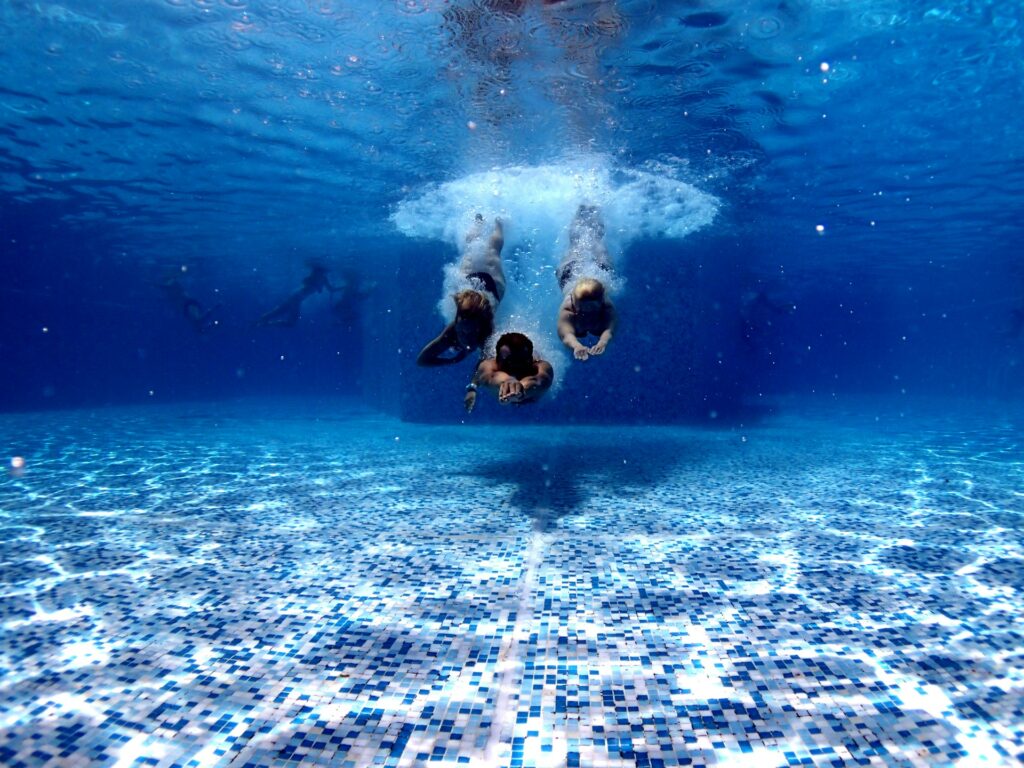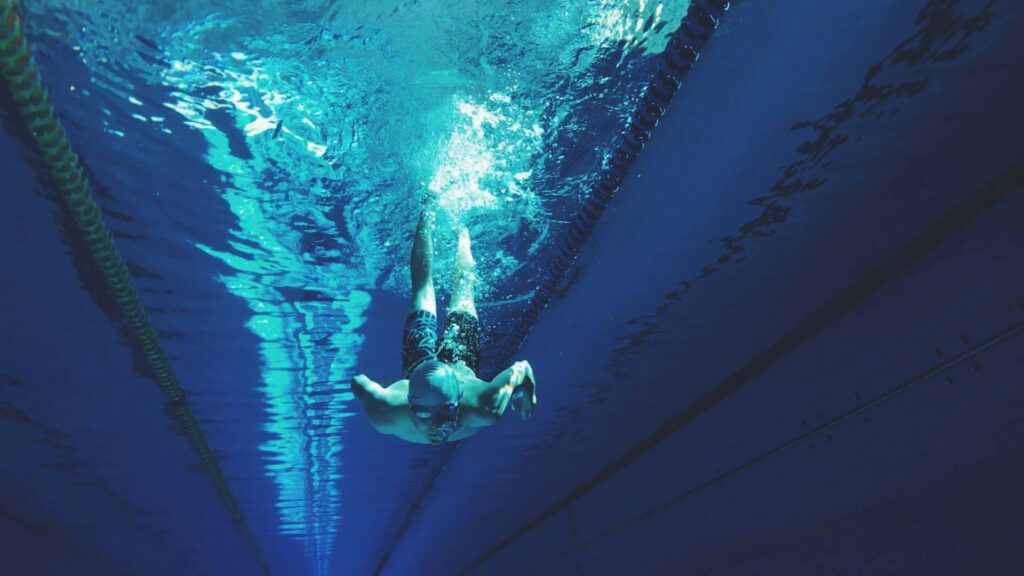Learn about What is Recreational Swimming. Discover what recreational swimming is, its fun styles, health perks, gear tips, and how to start. Great for all ages to relax, stay fit, and enjoy water time.
Swimming is the art of moving through a water medium by using the arms and legs. It is an entertainment as well as a complete workout. Some people swim as an exercise, while others swim to compete against one another or for their sheer pleasure. Swimming is a method to improve stamina, make the bones strong, and promote good health and well-being-whether it be in a pool, lake, or ocean.
What is Recreational Swimming?
Recreational swimming in pools, lakes, or oceans is swimming for fun rather than competition. It helps people unwind, get fit, and socialize with others. It suits all ages. It encourages one’s physical advancement, alleviates stress, and relaxes during leisure time.
Health Benefits of Recreational Swimming
Cardiovascular Workout
Swimming does well to increase heart and lung actiactivityyit will increase the heartbeat without putting so much strain on the body. It brings in circulation improvement, builds endurance, and uses the best cardio exercise for regular fitness to reduce the chances of diseases.

Full-Body Exercise
Swimming, unlike many exercises focusing on specific muscles, uses your entire body: arms, legs, core, and back working together for a truly balanced and complete workout producing strength, coordination, and overall tone in the muscles.
Calorie Burning
A few calories are burned depending on intensity and style, anywhere between 400-700+ per hour. It’s a fun and highly rewarding way to get fit, boost metabolism, and stay active with a less monotonous exercise regimen than those normally found in the gym.
Mental Health Boost
The soothing waves and rhythmic movements combine to relieve stress, anxiety, and depression, accentuated by swimming, which additionally releases happiness hormones commonly known as endorphins, thus making one feel refreshed both within and outside.
Types of Recreational Swimming
Recreational swimming isn’t one-size-fits-all. Here are a few popular styles:
1. Lap Swimming
Lap swimming it is one of the best ways to improve strength and endurance. It is almost rhythmic, back-and-forth swimming that sometimes feels like a workout, and sometimes feels like calming therapy.
2. Casual Play
Fun swimming is all about having fun. Whether you are splashing with friends playing water games, or floating, it offers a time to kick back and just relax. It does not matter what stroke you are using or whether you are making an effort; it’s just all about fun.
3. Water Aerobics
An aqua aerobics program is a combination of fun and fitness that works on the principle of low-impact workouts. The resistance of water is used in these movements to enhance flexibility, strength, and cardiovascular health; this is done at all ability levels.
4. Floating & Wading
You can take it easy or get started doing that by slowly gliding on your belly or back along the water’s surface. This sense of weightlessness with gentle water support provides much therapeutic value to relieve any stress, joint pain, or just the feeling of peace.
5. Snorkeling or Pool Games
Underwater fun or swimming pool games spice up the sessions with adventure. Exploration mingled with fun activities offers those wanting a more interactive and playful way to be entertained in the water.
How to Start Swimming for Fitness
1. Selecting a Swimming Pool
Take time to find an open swimming pool that is clean, safe, and accessible, with reasonably convenient hours. Choose the one that has trained lifeguards and provides lap swimming lanes to meet your fitness goals.
2. Choose the Right Gear
Buy a comfortable swimsuit plus nice goggles and swim cap. Other optional accessories include kickboards and fins that may further enhance training and help improve technique during progress.
3. Learn the Basics
To understand the basic swimming strokes and breathing techniques, this also includes information on water safety. You may also be encouraged to enroll in beginner swim lessons to grow confidence, perfect your technique, and swim the right way for fitness and endurance.
4. Start Swimming
Start with very short swim sessions focusing on consistency, not speed. Add time and distance as your endurance progresses, always remembering that warming up and cooling down are important to prevent injury.
Best Swim Gear for Recreational Use
You don’t need much to get started, but the right gear helps:
1. Swimsuit
A swimsuit should fit closely so that movement into and out of the water is not hindered. A good swimsuit allows you to swim or sunbathe free from any nuisance.
2. Goggles
Goggles shield the eyes from chlorine, salt, and other irritants. They also provide you with better visibility underwater with swimming comfort, especially during long stays. These goggles’ straps are adjustable and can be fitted snugly and preventing water leaks as you swim.
3. Swim Cap
A swim cap is great for long or thick hair, keeping it off the neck. It offers less resistance through water, protective hair from chlorine damage, and just makes the swimming experience better by stopping hair from getting in the way of the face.

4. Water Shoes
Water shoes provide traction and cover for the foot in natural environments like lakes or stony shores. They serve to minimize the risks of cuts, slips, or stubbed toes. Made of lightweight, dry, superfast material, they are the perfect design for almost safe movement in and around the water.
5. Towel & Bag
A soft, absorbent towel for drying off quickly and warming up after a swim. Use waterproof or mesh bags to store gear and separate wet items from dry. Make cleanup much easier.
FAQs
1. Is recreational swimming suitable for beginners?
Of course! It is simply the best form of exercise for novices, being so low-pressure, low-impact, and fun. You get to choose your own pace in swimming.
2. How often should I swim recreationally for health benefits?
Swimming two sessions a week could be beneficial for your heart and muscles and elevate your mood. Instead, try swimming 30-60 minutes in each session.
3. What should I bring to the pool as a recreational swimmer?
You might want to include your swimsuit, towel, swim goggles, swim cap, refillable water bottle, flip-flops, sunscreen, and swimming bag, while the optional ones are up to you.
4. Can recreational swimming help with weight loss?
Definitely! Swimming will metabolism your calories and tone your muscles while being gentle on your joints. For maximum benefits, accompany the swimming with healthy eating.
Conclusion
A very enjoyable way to keep fit and unwind, recreational swimming provides exciting health benefits. Whatever the style you prefer- lap swimming, casual play, or water aerobics affords a full-body workout and develops mental well-being. Anyone can reap the physical and mental gains of swimming, once the right gear and technique are applied.
